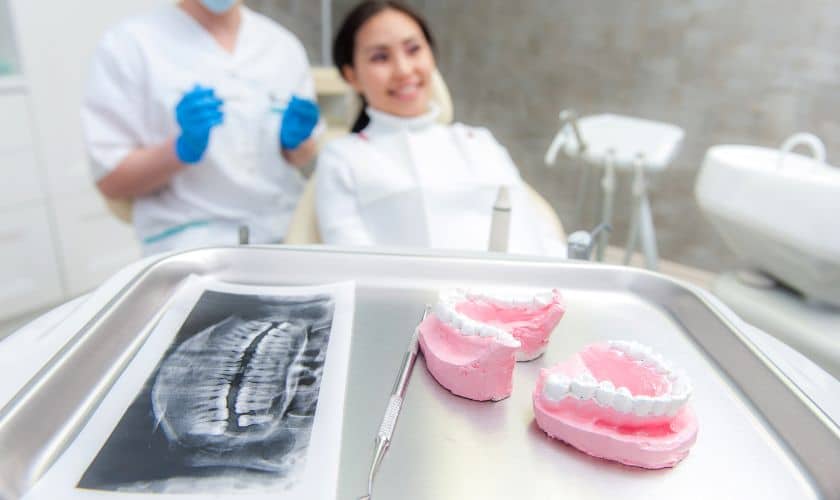
Understanding Gum Disease: Causes, Symptoms, and Prevention
Are you alarmed by bleeding gums or an unpleasant taste in your mouth? If so, you may be experiencing the early signs of gum disease. Don’t fret! In this comprehensive blog post, we will delve deep into the world of gum disease – exploring its causes, deciphering its symptoms, and arming you with effective prevention techniques. Whether you’re a dental enthusiast or simply curious about maintaining excellent oral health, join us as we unravel the mysteries behind this prevalent condition. Get ready to flash that beautiful smile confidently once again!
What is Gum Disease?
Gum disease is a form of periodontal disease that affects the gums and surrounding bone. The cause of gum disease is unknown, but it is believed to be caused by bacteria that thrive in an environment where plaque and calculus build up. Gum disease can affect any age, but is most common in adults over the age of 50. Gum disease symptoms can include toothaches, soreness, and a decrease in tooth size or strength. Gum disease can be prevented by daily brushing and flossing and by visiting a dentist regularly for cleanings and checkups.
The Different Types of Gum Disease
There are many types of gum disease, but all of them involve problems with the gums and teeth. The different types of gum disease are caused by different things, and each one has its own set of symptoms. Here’s a look at the four main types of gum disease:
Gingivitis is an inflammation of the gums. It’s most common in adults ages 20 to 49, and it’s usually caused by bacteria (gum diseases are also called oral diseases). Gingivitis can lead to tooth decay if it isn’t treated. Symptoms include redness, pain, and swelling around the gums.
Papillomatosis is a skin disorder that causes tumors to develop on the lips, tongue, or other areas of the body that come into contact with saliva (papillomas are also called warts). Papillomatosis can cause bad breath and a loss of taste (dysgeusia) in areas affected by papillomas.
Orofacial myeloma is a type of cancer that affects the tissues around the mouth (including the teeth). Orofacial myeloma is rare, but it can affect any part of the mouth or face. Symptoms include jaw pain, difficulty chewing food properly, drooling, appetite changes, redness or swelling in the mouth or face, and difficulty speaking.
Causes of Gum Disease
Gum disease is a serious condition that can cause significant damage to the teeth and gums. There are many different causes of gum disease, but the most common ones include poor oral hygiene habits, genetics, and plaque buildup.
Poor oral hygiene habits are the leading cause of gum disease. People who don’t brush their teeth or floss regularly are at a higher risk for developing gum disease. Gum disease also tends to run in families, so if you have a family history of the condition, you’re also at an increased risk.
Plaque buildup is another major cause of gum disease. Plaque is a sticky film that forms on the teeth and gums due to bacteria growth. Over time, plaque can form into thick deposits that can damage your teeth and gums.
There are several ways to prevent gum disease from developing: brush your teeth twice a day with fluoride toothpaste and water, use an effective mouthwash daily, avoid eating foods that contain sugar or starch (including candy), and see your dentist regularly for cleanings and checkups.
Symptoms of Gum Disease
Gum disease is a condition in which plaque forms on the teeth and gums. This plaque can cause inflammation, which can lead to tooth decay and other health problems. Gum disease is most commonly caused by a combination of poor oral hygiene habits and a diet high in sugar and processed foods.
Prevention of Gum Disease
Gum disease is a common problem that can affect the gums and teeth. The condition is caused by bacteria that colonize the mouth and cause inflammation and swelling in the tissues around the teeth. Gum disease can cause tooth loss, but it can also lead to other problems, such as reduced dental function and difficulty eating. There are ways to prevent gum disease, and you should see your dentist regularly to check for signs of the condition.
Recent Posts

How Adhesive Techniques Have Improved Denture Fit

How Dentures Can Renew Mom’s Self-Assurance This Mother’s Day

TMJ Treatment: What to Expect During Your Dental Visit

How Stress Affects Gum Health And Strategies For Stress Management

